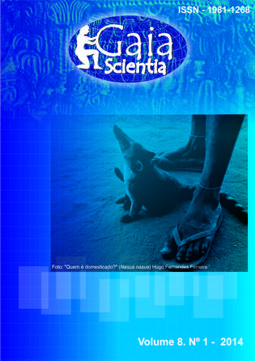Floristic composition and structure of an urban forest remnant of Fortaleza, Ceará
Palavras-chave:
conservation, floristic, pre-litorenean plains, densityResumo
The northeastern Brazil coastal region has some vegetation fragments in the pre-litoranean plains, locally called Tabuleiro forests. Our knowledge of the vascular plant flora of these forests is poor. This study describes the structure and floristic composition of a remnant forest into the city and its main aim is determinate the floristic composition and indicate the preservation condition of the forest. To carry out the inventory, two areas of 0.25ha were chosen (wet and dry) and we marked 25 points quadrats for each. Al trees > 150 cm height and ≥ 5 cm DBH were sampled, numbered and identificated. We found 200 trees and shrubs belonging to 27 species, 26 genera and 18 families; the total number of species recorded rose to 116 species, representing 100 genera and 49 families when we joined this result to different studies in the same area. The families with higher number of species were Fabaceae (18), Rubiaceae (13), Asteraceae (8) and Malvaceae (8). The wet and dry areas were very similar floristically (0.43 and 0.58, Jaccard and Sorensen respectively), having 12 species in common. The average distance and the total density of the study area (0.5ha) was 3.27m ± 0.23 and 980 ind./ha respectively. For the diameter, we found an average value of 14.53cm ± 5.6 and, for the height, we observed a midsize of 6.13m ± 2.4. The Tabuleiro forest of Campus do Pici presented a high Shannon diversity index for a degraded remnant (H’ = 3.11 nats/ind) and low dominance (J' = 0.8). This area plays a critical role in the preservation of Brazil’s natural heritage.Downloads
Não há dados estatísticos.
Downloads
Publicado
2014-12-23
Como Citar
DIOGO, I. J. S.; HOLANDA, A. E. R.; OLIVEIRA FILHO, A. L. de; BEZERRA, C. L. F. Floristic composition and structure of an urban forest remnant of Fortaleza, Ceará. Gaia Scientia, [S. l.], v. 8, n. 1, 2014. Disponível em: https://periodicos.ufpb.br/ojs2/index.php/gaia/article/view/18106. Acesso em: 26 dez. 2024.
Edição
Seção
Ciências Ambientais










